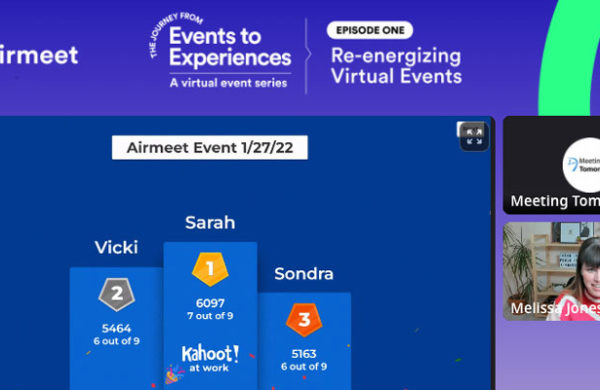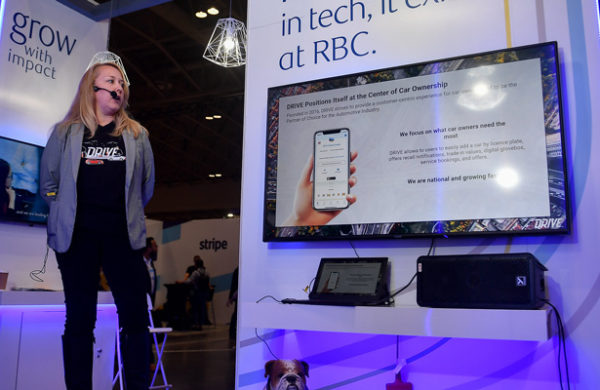
Webcast. Broadcast. Simulcast. Video Conferencing. Satellite. Live Streaming.
All those jargon-y words essentially mean ‘a virtual event,’ or the idea of sharing a live presentation with a virtual audience. If you’re planning a virtual event for the first time, you may have heard all those words and wondered what the differences are between them. I’ll let you in on a secret: the terms are interchangeable and their differences aren’t universally clear, even to industry experts. But fear not! A true expert and partner will be able to guide you through the virtual event process. Planning your first virtual event can be overwhelming and seem like a daunting task. My clients often tell me they feel like they don’t know where to start. There are many companies that facilitate virtual events; their support ranges from getting you a simple platform license to a full-service company that comes in and handles everything from start to finish. Since there are lots of options, find a partner who explains the process, asks thoughtful questions, provides contingency plans and full support, especially for your first virtual event. In general, keeping the below components in mind will help guide you to success!
Platform and Visuals
The first step is to choose a virtual platform that best suits your needs. There are several platforms to choose from that all have different functionality and it can be overwhelming! The big factors to consider when determining what platform will work are:
- Video feeds: What is the virtual audience looking at on their screen? Besides the slide deck, consider what other video feeds are needed for the presentation (for instance, a live feed of the presenter).To save costs, some clients do an audio-only presentation with the slides so they do not need cameras to film the presenter. The best solutions have multiple cameras for the presenter(s) and if applicable, a camera filming the local audience so the virtual attendees feel like they’re part of the live meeting.
- Interactivity: There are lots of ways to help remote attendees feel like they’re part of the live meeting. The lowest cost option is using the built-in functionality of the platform you’ve chosen (or are considering). This can include a Q&A function, polling, and social media integration. The most advanced method is best used for multi-site events (multiple presenters and live audiences in different locations). It utilizes two-way audio and video between all sites so the feed switches seamlessly between several presenters and audiences, simulating the feeling of one meeting where everyone is engaged.
- Registration: Depending on your registration needs, you might need a platform that can integrate with your internal system. You could also use an external solution to manage registration, send out log-in information, meeting reminders, and any other communication pre and post-event.
Location. Location. Location.
Take stock of where your presenters and attendees (live and remote) are located. The ‘host location’ is the source of your presentation. Is it a person speaking on stage with their slide deck in a hotel ballroom in front of a live audience? Or is it a person by themselves in their office, or in a studio with the technical crew? Maybe there are multiple presenters in different locations! Most virtual events only have one host location but some want to incorporate presenters at multiple sites, like for a company-wide announcement with executives in multiple offices. For the attendees, they can be gathered at locations across the country (in offices, restaurants, hotels, etc. These types of locations can be called ‘receiving locations.’), logging in from their homes, or a combination of both. Knowing where all these locations are and how many people are expected at each will allow your virtual AV partner to prepare each site effectively.
Internet Requirements
Ensuring each site has an internet connection that can support the event is generally the biggest area of concern for meeting planners. Your virtual AV partner should help you with this so you don’t have to stress! By performing a site inspection at each location (both host and receiving) to ensure internet speeds are sufficient, issues can be identified upfront before a venue is booked. Additionally, a great partner can pull from their experience and recommend locations that have been successful in the past. A minimum internet bandwidth will be designated based on the platform you choose. That is what will be vetted in the site inspection process, along with other items such as firewalls and back-up phone lines. One thing to note is that if you’ve heard rumors about venues having terrible internet when webcasting started, I can guarantee it is MUCH better now and most hotels, restaurants, and offices will pass a site inspection.
Contingency Planning
Your virtual AV partner will set your event up for success, but day-of issues are inevitable so contingency plans must be in place. For instance, a site inspection could result in great internet speeds. But, that can all change on the day of the event – maybe the internet provider is having issues, or there’s a sporting event nearby with thousands of spectators dragging down the bandwidth. Contingency plans to the rescue! An excellent partner should plan for internet failure and have options at the ready. These can include 4G high-speed aircards, audio bridge backup solutions, and extra equipment to prevent additional issues that may arise. Having a 24/7 support line for remote attendees to call if they are having any issues is also a huge plus.
Presenter
A presenter’s effectiveness at running a virtual event can make or break the attendee experience, and it comes down to preparedness. Your virtual AV partner should train them on how the platform works and what to expect during the live event. There are also best practices around what to wear, how to address remote attendees, and managing Q&A. Having a technician onsite with the presenter is also helpful; the technician can guide the presenter through the process, creating a positive experience for everybody involved. There’s definitely a lot to consider when planning and executing a virtual event. Once you get a handle on the key factors and logistics, it’s an incredibly powerful way to reach a broad audience and spread your message.


